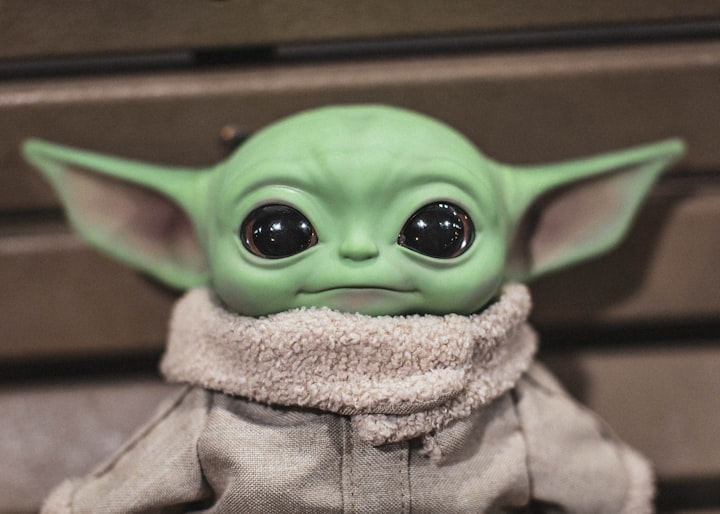
1.Scariest Moments in 'The Grudge' Franchise:
The ghostly apparition of Kayako crawling down the stairs in the first film is a truly terrifying image that sets the tone for the entire franchise.
In the second film, the scene where Karen is dragged out of the shower by an unseen force is both shocking and horrifying.
The iconic scene in which Kayako's ghost appears to be crawling out of a television in the second film is a true nightmare fuel.
The third film features a scene where a character is attacked by ghostly hands emerging from a pool of water, making for a truly disturbing moment.
The climax of the first film, in which Karen is confronted by the vengeful spirits in the house, is a tense and terrifying sequence.
The scene in the third film where a character is stalked through a dark and foggy forest by the ghostly apparition of Kayako is one of the most suspenseful moments in the franchise.
The moment in the second film when Karen discovers a hidden room filled with ghostly apparitions is a truly frightening and unsettling reveal.
The final scene of the first film, in which the vengeful spirit of Kayako is shown to have spread beyond the haunted house, leaves a chilling and lasting impression.
2.A Look at the Evolution of the Iconic Ghost from 'The Grudge":
The iconic ghost from "The Grudge" franchise, Kayako, has undergone several transformations throughout the series. In the original Japanese film, "Ju-on," Kayako is portrayed as a traditional vengeful ghost, with long black hair covering her face, a pale complexion and a ghostly appearance.
In the American remake of the film, "The Grudge," Kayako's appearance is slightly altered to make her more terrifying for Western audiences. Her hair is made more wild and unkempt, her eyes are made more prominent, and her movements are made more erratic.
In the sequels and spin-offs of the franchise, Kayako's appearance is further developed, with her ghostly figure becoming more contorted and twisted, reflecting the increasing intensity of her vengeful spirit. Her movements are also made more aggressive, with her crawling and lunging at characters in a more menacing manner.
The franchise also introduced a new ghost, Toshio, Kayako's son, who also evolved through the series, becoming more ghostly, more twisted and more frightening.
Overall, the evolution of Kayako's ghostly appearance throughout the "The Grudge" franchise serves to heighten the audience's sense of terror and unease, making her one of the most iconic and memorable ghosts in horror film history.
3.Exploring the Cultural Significance of the Japanese Horror Classic:
"The Grudge" is a Japanese horror classic that has had a significant impact on both the horror genre and Japanese culture. The film is based on the traditional Japanese ghost story, known as "Ju-on" which is rooted in the country's folklore and mythology.
One of the cultural significance of the film is the way it explores themes of grief, loss, and the consequences of holding on to negative emotions. These themes are deeply ingrained in Japanese culture, as they are rooted in the traditional belief of the "Onryō" - a vengeful ghost seeking revenge for a wrongful death.
Furthermore, the film also reflects the cultural practice of "Honor Suicide" (Seppuku) which is a ritual suicide by disembowelment and it was once used by the samurai to restore their honor, the ghost of Kayako, who died from Honor Suicide, is seeking revenge from those who wronged her.
The film also explores the theme of "Makura no Sōshi" which is a traditional Japanese book of pillow stories, this is a collection of short stories and poems that were meant to be read before going to bed. These stories often have supernatural elements and are meant to be scary and to keep the reader awake.
Additionally, the film also taps into the cultural fear of the unknown, the unseen, and the power of the imagination to create fear. The film's use of jump scares, eerie sound effects, and creepy imagery all contribute to building a sense of unease and horror that is deeply rooted in Japanese culture.
Overall, "The Grudge" is not only a horror film, but it also serves as a window into Japanese culture, revealing the country's deep-seated fears and beliefs.
4.A Study of Grief and Revenge in Horror Films:
"The Grudge" franchise is a prime example of how horror films can explore the complex emotions of grief and revenge. The central premise of the films is the vengeful ghost of Kayako, who died due to the consequences of her husband's infidelity and her son's death. Her ghost is driven by the intense emotions of grief and anger and seeks to take revenge on those who wronged her.
The films also explore the theme of grief through the characters that are affected by the ghost's curse. They experience a range of emotions such as guilt, fear, and confusion as they try to come to terms with the deaths of their loved ones and the possibility of their own demise.
The films also highlight the idea that holding on to negative emotions such as grief and revenge can have a destructive impact on the living, as seen through the characters that are unable to let go and move on from the past.
The films also explore the idea that grief and revenge are cyclical and that the act of revenge only leads to more grief and suffering, a theme that is also rooted in the traditional belief of the "Onryō" - a vengeful ghost seeking revenge for a wrongful death.
Furthermore, the films also explore the theme of responsibility and the weight of guilt, as the characters are forced to confront their actions and their role in the chain of events that led to the ghost's curse.
Overall, "The Grudge" franchise serves as a powerful study of grief and revenge in horror films, using the supernatural elements of a vengeful ghost to delve into the complex emotions and consequences of these powerful human experiences.
5.How it Stacks Up Against the Original:
The American remake of "The Grudge" (2004), directed by Takashi Shimizu, was met with mixed reactions from critics and audiences. Some praised the film for its strong performances and ability to maintain the tension and scares of the original, while others criticized it for deviating too much from the source material and not capturing the same atmosphere and cultural context of the Japanese original.
One of the main differences between the original and the remake is the pacing and structure of the story. The original is more slow-paced and relies on building a sense of unease and dread through atmosphere and imagery, while the remake is more fast-paced and relies on jump scares and flashy special effects.
The original also has a more ambiguous ending, leaving some of the questions unanswered, whereas the American version has a more straightforward and explicit ending. The American version also includes a broader cast of characters, which in some cases added to the complexity of the story but in other cases it was seen as diluting the power of the original.
The performances in the American version were also seen as strong, with Sarah Michelle Gellar delivering a convincing portrayal of Karen, the lead character, and Bill Pullman, Clea DuVall, and KaDee Strickland, among others, also delivering solid performances.
In general, the American version of "The Grudge" can be seen as a more mainstream and Hollywood-friendly adaptation of the original. It's a decent horror movie but it lacks the cultural and thematic depth of the Japanese original and it's not as effective in creating a sense of unease and dread.
6.Comparing the Two Adaptations:
When comparing the original Japanese film, "Ju-on," with its American remake, "The Grudge," there are several key differences to consider.
One of the main differences is the cultural context. "Ju-on" is deeply rooted in Japanese folklore and mythology, drawing on traditional beliefs about vengeful ghosts and the consequences of holding onto negative emotions. "The Grudge," on the other hand, is more of a Hollywood-style adaptation, with a more straightforward narrative and a focus on jump scares and special effects.
Another major difference is the pacing and structure of the story. "Ju-on" is more slow-paced and relies on building a sense of unease and dread through atmosphere and imagery, while "The Grudge" is more fast-paced and action-packed. The original also has a more ambiguous ending, leaving some questions unanswered, whereas the American version has a more straightforward and explicit ending.
The characters and the cast also differ. The original follows a smaller and more focused group of characters, with the emphasis on the ghost of Kayako and her son Toshio, while the American version features a broader cast of characters and the story is told from different perspectives.
In terms of performances, the original features a mostly unknown cast, which some argue adds to the realism of the film, while the American version boasts a recognizable cast, including Sarah Michelle Gellar, and Bill Pullman, Clea DuVall, and KaDee Strickland.
Overall, while both "Ju-on" and "The Grudge" are effective horror films, they offer a very different experience, with the original being more focused on atmosphere and cultural context and the American version being more mainstream and focused on scares and special effects.
7.The Americanization of Japanese Horror:
The Americanization of Japanese horror refers to the process of adapting Japanese horror films and stories for a Western audience. This often involves changes to the original material, such as the inclusion of more special effects, a faster pace, and a more straightforward narrative. The Americanization process also includes changes in the casting and the cultural references.
One of the most notable examples of the Americanization of Japanese horror is the 2004 film "The Grudge," which is a remake of the Japanese horror film "Ju-on." The original film is a slow-paced and atmospheric horror film that relies on building a sense of unease and dread through imagery and cultural references. The American version, on the other hand, is more fast-paced and action-packed, with a focus on jump scares and special effects.
The Americanization process also includes changes in the casting, with Hollywood actors and actresses taking the lead roles, which in some cases detract from the sense of realism of the original. Additionally, the American version also made changes to the cultural references, for example, the traditional Japanese "Onryō" ghost is portrayed in a more Westernized way, with a more aggressive and violent behavior.
The Americanization of Japanese horror can also be seen in other films such as "The Ring," "Dark Water," and "Shutter," which have all been remade for Western audiences with changes to the pacing, the cast, and the cultural references.
Overall, the Americanization of Japanese horror can be seen as a way to make the films more accessible to Western audiences, but it also results in a loss of the cultural and thematic depth of the original material. The Americanized versions of the films often focus more on scares and special effects and less on the atmosphere, cultural references and the psychological horror that are inherent in the original Japanese films.
8.Real-Life Haunted Houses that Inspired:
"The Grudge" franchise is said to have been inspired by several real-life haunted houses in Japan.
One of the main inspirations for the film is the "Tōhōkai" incident, which occurred in the 1980s. The story involves a family who lived in a small house in Tokyo, where the mother, father, and their child died in a murder-suicide. The house was later demolished, but reports of strange occurrences and ghostly sightings in the area persisted.
Another inspiration is the "Hachigatsu no Kyō" or "The August Curse" is a true story that happened in the early 2000s, in a house in Saitama, Japan. A family of four, who moved into the house, began to experience strange events, such as objects moving by themselves, strange noises, and ghostly apparitions. The mother of the family died in an accident and the father and the children moved out, leaving the house uninhabited. The house was later demolished, but the strange events and ghostly sightings continued to be reported.
Both stories share a similar theme of a family who suffered a tragic death in a small house, and the vengeful spirits of the family members who died in the house are said to still haunt the area.
It is important to note that these stories are based on real-life events but their veracity can't be confirmed and it's not certain how much of the story was used as an inspiration for the Grudge franchise. The franchise is mainly a work of fiction, but it is said that the film's creator, Takashi Shimizu, was inspired by these real-life events to create the story of "The Grudge."
Overall, while the franchise is a work of fiction, it is said to have been inspired by real-life haunted houses in Japan, which adds to the eerie and unsettling atmosphere of the films.






Comments
There are no comments for this story
Be the first to respond and start the conversation.